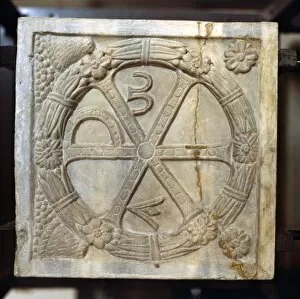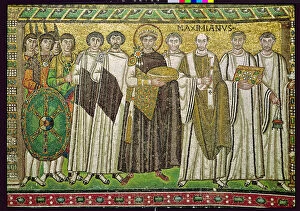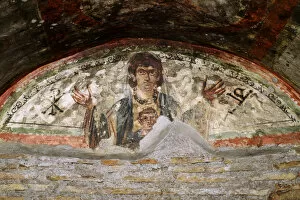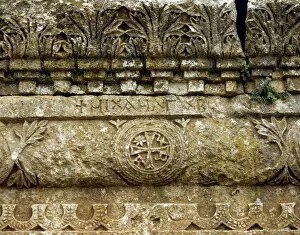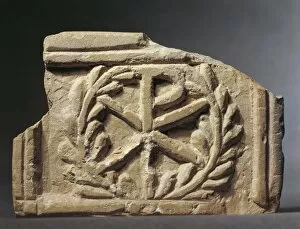Chi Rho Collection
"Exploring the Rich Symbolism of Chi Rho: A Christian Monogram" The Chi Rho, also known as the Xpistos or Greek monogram for Christ
All Professionally Made to Order for Quick Shipping
"Exploring the Rich Symbolism of Chi Rho: A Christian Monogram" The Chi Rho, also known as the Xpistos or Greek monogram for Christ, holds a significant place in Christian iconography. From Roman tombstones to mosaics and sarcophagi, this powerful symbol has left its mark throughout history. In ancient Rome, a Roman tombstone adorned with Christian iconography showcased the representation of the Chi-Rho symbol alongside other religious motifs. This mosaic depicted not only the Chi-Rho but also incorporated the alpha and omega symbols, representing Christ as both the beginning and end. One remarkable find is an early Christian sarcophagus from 4th century Rome that features a beautifully decorated lamp with intricate details of the Chi-Rho symbol. This terracotta masterpiece showcases how deeply rooted this monogram was in early Christianity. Moving to Ravenna's Basilica of San Vitale in Italy's Emilia Romagna region, we encounter an awe-inspiring apse half-dome adorned with stunning mosaics depicting various scenes from biblical narratives. Among these masterpieces lies another depiction of the Chi-Rho symbol, emphasizing its significance within religious art. Even columbarium tomb plaques made between 500-800 AD feature this iconic monogram prominently carved into terracotta. These plaques serve as reminders of Christ's presence even in death and reflect how widely recognized and revered it had become during that time. A marble Christian sarcophagus discovered in Catacombs of St. Domitilla further illustrates devotion to Christ through scenes such as His arrest before Pontius Pilate. The inclusion of the Chi-Rho on this intricately designed piece highlights its importance within early Christianity. Not limited to tombs or catacombs alone, Emperor Justinian I himself embraced this powerful emblem along with his retinue depicted in a mesmerizing mosaic dating back to around 547 AD.


